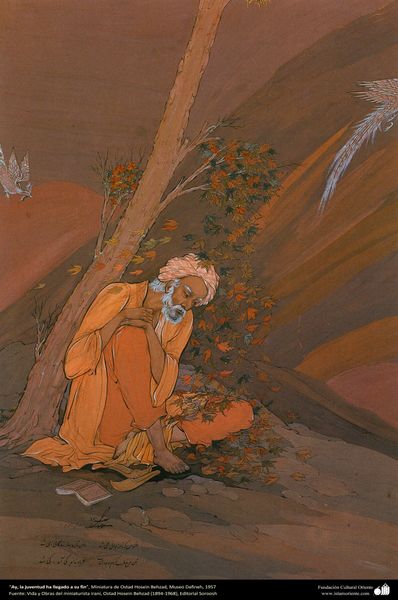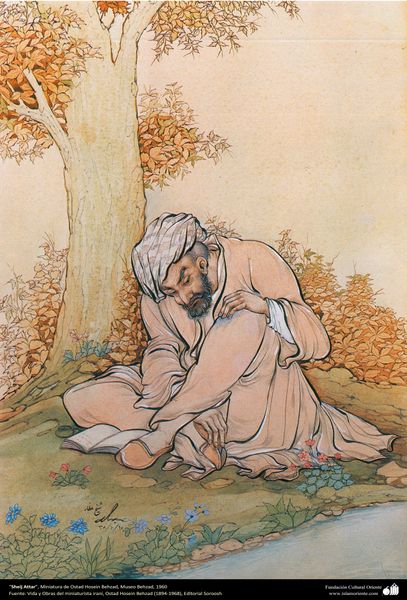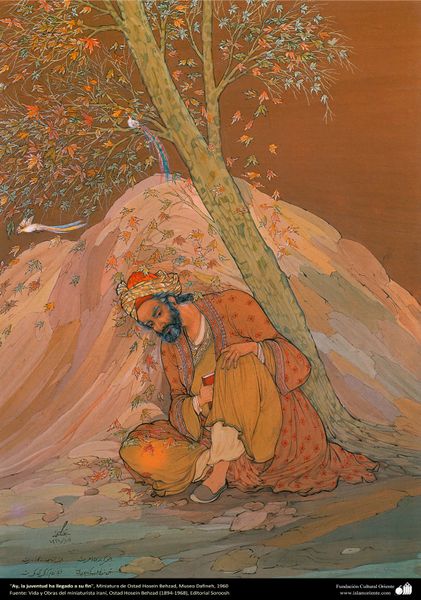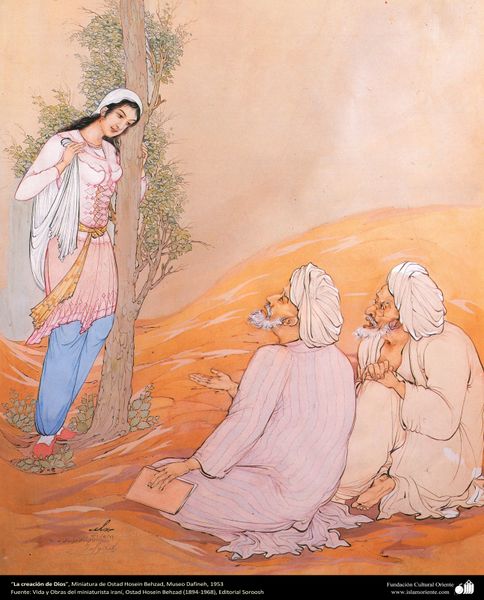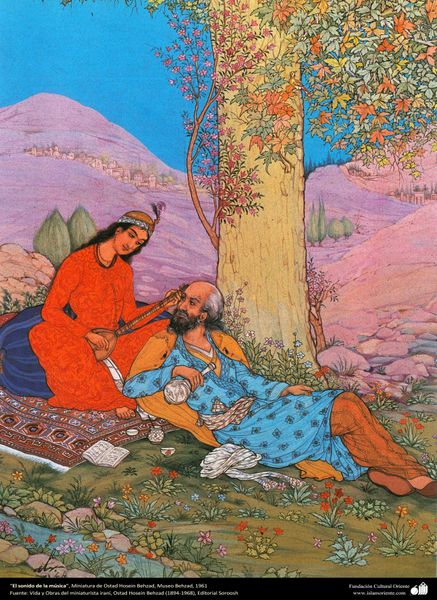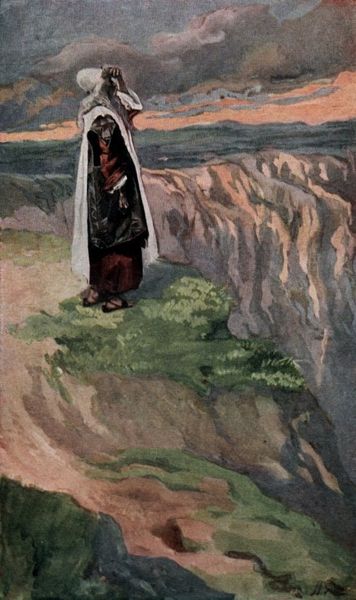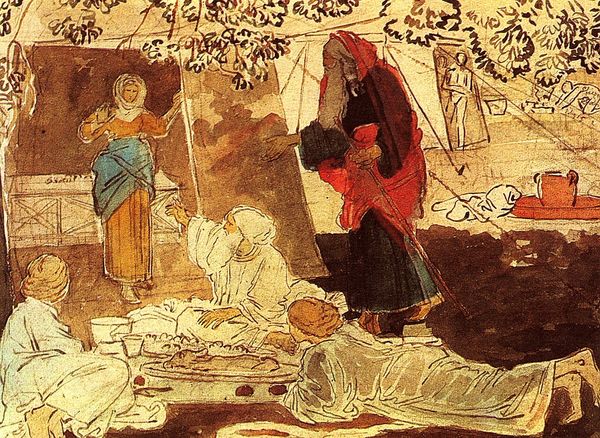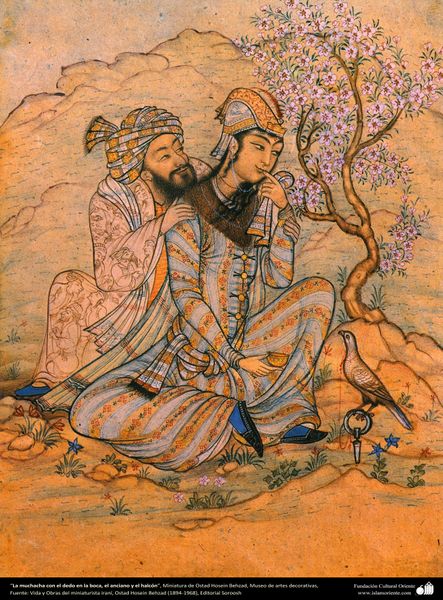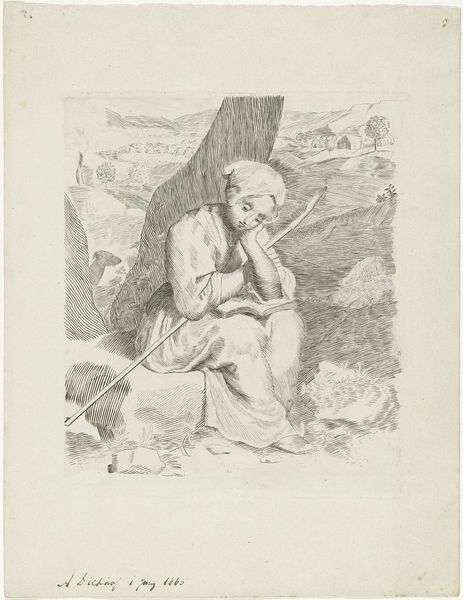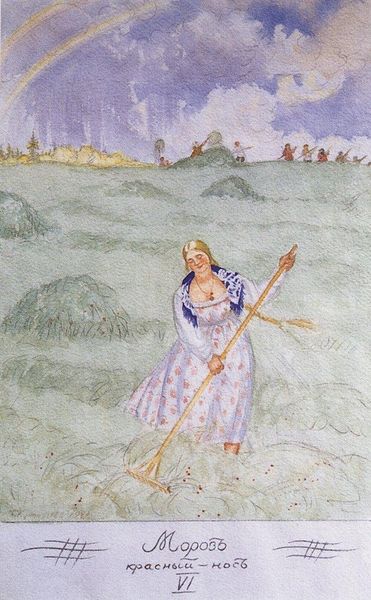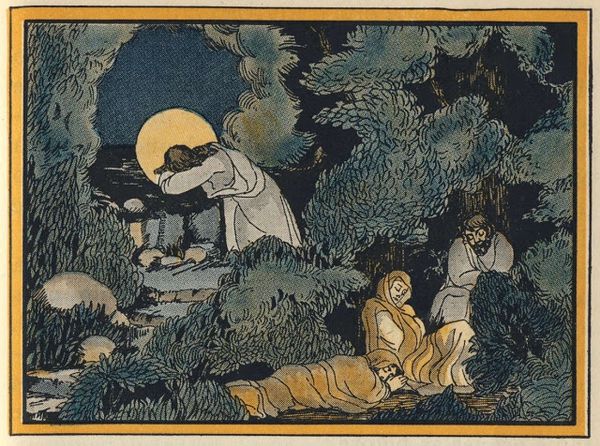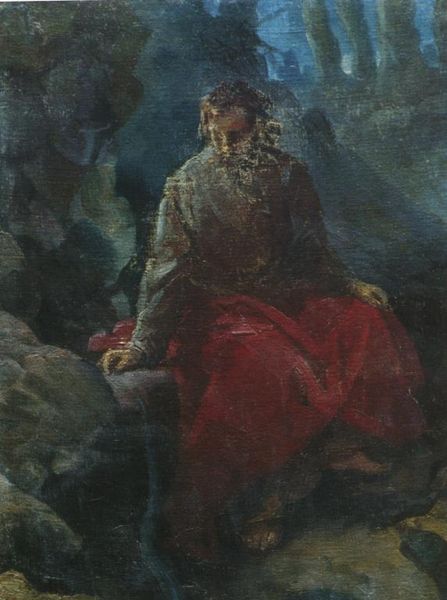
tempera, painting
#
portrait
#
tempera
#
painting
#
oil painting
#
orientalism
#
islamic-art
#
academic-art
#
miniature
#
watercolor
Copyright: Hossein Behzad,Fair Use
Curator: Hossein Behzad’s "Ibn Sina," created in 1950 using tempera, is an intriguing piece. My immediate impression is of serenity—a quiet moment captured in soft, muted tones. Editor: Yes, there's an undeniable stillness. I see more than just serenity, though. I see a carefully constructed narrative that romanticizes the pursuit of knowledge. It situates Ibn Sina in this idyllic natural setting, emphasizing his intellect and, perhaps, obscuring the complexities of his historical context. Curator: But consider the composition. The figure of Ibn Sina is grounded, connected to the earth and the books surrounding him, all arranged symmetrically on the plane, mirroring the shape of the body. Yet the delicate lines, the subtle gradations of color—these pull our eye upward, towards the implied horizon line. Editor: And let's consider what’s not present: any hint of the sociopolitical world that shaped Ibn Sina's work. This idealized presentation arguably contributes to a form of cultural essentialism, isolating him from the society that bore him. Curator: Perhaps. But isn't it equally valid to appreciate Behzad’s mastery of form, his ability to convey depth and texture with such restraint, with the medium of tempera and employing watercolor techniques? Observe the subtle illumination, the interplay between light and shadow that gives the figure form and weight on the surface. The composition invites the viewer into the work, it functions perfectly well formally and on its own terms, regardless of what political framing we place on it. Editor: I won’t deny the artist’s skill, however, I would want to question what it might mean for Behzad to invoke Ibn Sina at the height of Cold War anxieties. The orientialist tropes on display here serve as cultural branding. The placement of a book, ink, and pen—fetishizing intellect by presenting it on the level of decoration or furnishing in the domestic sphere of an old world and ancient culture. This reinforces a dynamic between knowledge producers and knowledge consumers which relies on extraction. The artwork itself has meaning beyond aesthetics or form. Curator: A fascinating lens through which to view it. I find that the dialogue enriches my understanding of how formal elements interact with wider ideological contexts. Editor: Precisely! Considering "Ibn Sina" through the lens of identity and historical representation allows us to engage with it critically, sparking nuanced insights.
Comments
No comments
Be the first to comment and join the conversation on the ultimate creative platform.
